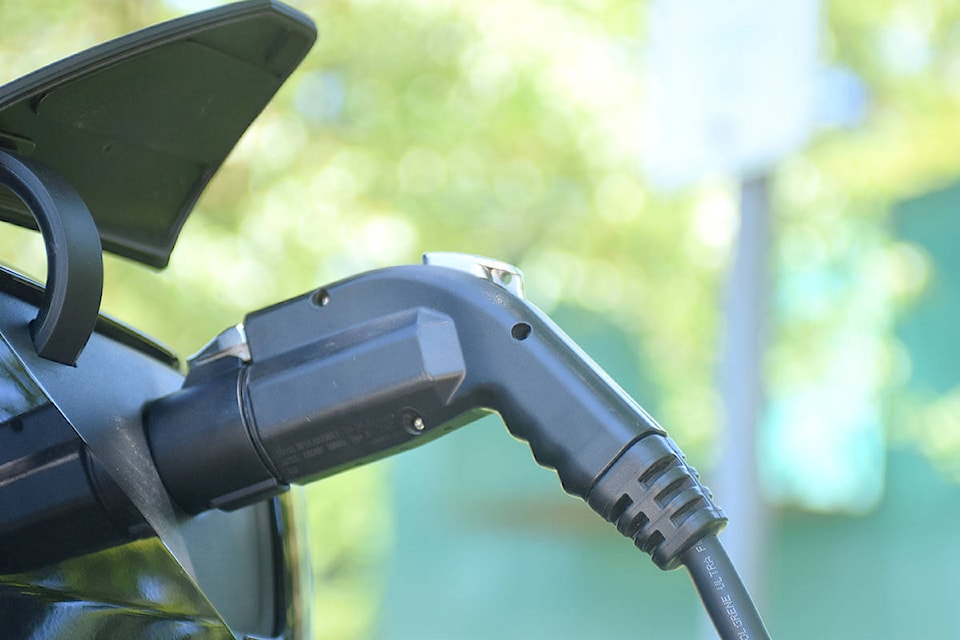Replacing the City of Abbotsford’s gas-guzzling cars and trucks with cleaner-burning vehicles will pay for itself within a few years in addition to helping the environment, according to a new report.
Two weeks ago, the city released a report showing its greenhouse gas emissions have budged little in the past decade, despite the city’s promise that it would try to reduce its carbon footprint. That report showed that the city’s fleet of more than 600 vehicles – including police cruisers – produces just over half of all the city’s greenhouse gas emissions.
On Monday, council approved transitioning to a “green fleet” that could slash Abbotsford’s emissions by 20 per cent by 2025. Doing so would cost more money up front and require infrastructure improvements, such as a compressed natural gas filling station and more electric vehicle charging stations. But it would pay for itself by reducing the city’s $1.1 million annual fuel bill.
RELATED: Changing climate to cost Abbotsford taxpayers millions
Consultants who looked at four different green fleet strategies, along with the current business-as-usual approach, determined the most aggressive approach made the most sense, with a higher-up-front cost countered by savings on fuel and the largest possible emissions decrease.
The strategy would increase fleet-replacement capital costs by about 14 per cent – amounting to about $4 million over a 10-year-period. But that extra spending would pay for itself in five years thanks to lower fuel costs. To pay for the extra capital costs, the city would use a gas tax rebate fund already reserved for environmentally friendly projects. The fund currently has $1.8 million.
The report notes that some of the proposed fuel configurations – electrically powered garbage trucks, for one – aren’t yet commercially viable. But intermediate steps, like powering those trucks with compressed natural gas, can be taken in the interim.
Two weeks ago, when staff showed council the previous year’s emission levels, Coun. Dave Loewen said the city appeared to be in a “holding pattern.”
“Overall, there really hasn’t been the kind of decrease I would have thought,” he said at the time.
On Monday, he said he was “encouraged” by the strategy and suggested the city try to get more private businesses to follow suit by sharing the benefits of the plan.
“Perhaps there’s a strategy that staff might want to consider about how we get the message out to the public sector by sharing the strategies that we are employing … and the positive paybacks both to our bottom line and to the environment.”
Although the report suggests biofuels be considered for some trucks, Coun. Brenda Falk said staff should take into account how such energy is produced when decisions are made to turn in that direction.
She pointed to concerns that, in some areas of the world, farmers have replaced food crops with those destined for people’s gas tanks.
Coun. Sandy Blue suggested the plan might allow the city to take advantage of federal grants to further reduce the capital costs of upgrading both fuel infrastructure and city facilities.
Last year’s recorded emissions of about 5,747 tonnes were down more than 10 per cent from 2017, but in line with previous totals. (The cold snaps in 2017 had pushed Abbotsford’s carbon footprint higher than previous tallies, thanks to the use of snowplows and the need to heat city facilities.)
Abbotsford and most other communities in the province are signatories to the BC Climate Action Charter. Of the 187 signatories, 45 declared themselves to be “carbon neutral” last year. Those included small towns like Ashcroft and Lumby, and medium and large cities like Nanaimo, Richmond and Vancouver. Abbotsford was not among those carbon-neutral communities.
Prior to 2017, Abbotsford declared itself to be a Level 2 participant in the charter program, which just requires the measurement of emissions. The last two years, though, the city says it has achieved the third level – “accelerating progress” – thanks to a pair of programs. Those include working on the green fleet strategy and a plan to reduce energy consumption and emissions at its facilities.
Having signed the charter, the city gets back its carbon tax expenditures, but must also reports its emissions and its various environmental activities. This year’s carbon tax rebate will amount to about $220,000.
Efforts to minimize the city’s carbon footprint are woven throughout the city’s Official Community Plan and various master plans, staff said this week. Those plans suggest that building a denser, more efficient city will reduce emissions. The city has also endorsed stricter rules to encourage the construction of more efficient new buildings and will hire a new energy manager with funding from BC Hydro.
RELATED: UFV adds electric car to its vehicle fleet
RELATED: Abbotsford wants to know how much it will cost to buy greener vehicles
@ty_olsen
tolsen@abbynews.com
Like us on Facebook and follow us on Twitter.
